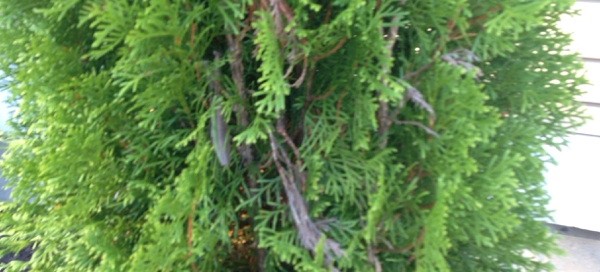Arborvitae Dieback
Arborvitae can brown for many reasons. Your plant is browning in the middle, which is normal (evergreens drop up to a third of their needles each year, though they don't drop all at once as with deciduous trees). This specimen appears to have been in this location for some time, so in all likelihood the watering and drainage are not problematic (though too much/too little water or poor drainage can take a toll, resulting in a different pattern of browning). Check the trunk at the soil line to make sure it's not injured or damaged.
Occasionally pests such as spider mites are an issue - you can check for them by placing a white sheet of typing paper under a branch and shaking the branch slightly. If present, the spider mites will fall onto the paper and should be easily spotted. Look for other signs, such as webs for spiders, tunneling on the stems and leaves, leaf miners and wet sticky sap that might be a sign of aphids. If you discover a pest, your local garden center or nursery can help you determine effective solutions. (Never spray without knowing what your pest is, because that, too can cause browning!)









